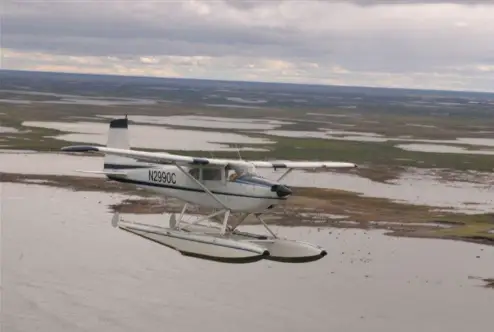The Arctic has emerged as both a symbol and a reality of planetary change, capturing the attention of scientists, artists, and storytellers alike. Its rapidly shifting climate, fragile ecosystems, and profound cultural histories have become focal points in global conversations about environmental responsibility. Works like Chasing Ice and Arctic Dreams offer contrasting yet complementary visions of this region—one through the immediacy of visual documentation, the other through slow, reflective prose. Together, they deepen our understanding of not only the Arctic’s transformation but also our own relationship to nature. As pointed out by Eric Weaver, these perspectives remind us that how we tell the story of climate change—through emotion, imagery, or philosophical thought—can shape how it is understood, felt, and acted upon. As ice melts and landscapes evolve, these narratives remain vital in connecting distant changes to everyday awareness, bridging the gap between data and meaning.
Understanding the Arctic Region
The Arctic spans the northernmost parts of the globe, encompassing icy oceans, tundra, and permafrost. It plays a crucial role in regulating global temperatures and ocean currents, acting as a kind of planetary thermostat. As this region warms at nearly four times the global average, its stability is increasingly at risk. Nations with Arctic territory are reassessing their environmental policies, driven by the increasing pace of permafrost thaw and ice loss.
Glacial melt, thinning sea ice, and shifting weather patterns are no longer isolated events. These changes disrupt ecosystems and impact global sea levels. Polar bears, dwindling ice sheets, and extreme weather events in lower latitudes are only a few signs of a larger transformation underway. Shrinking habitats are also altering migration patterns and food sources for native species.
The Arctic’s vulnerability highlights its importance in global climate science. Researchers and storytellers alike have turned their attention north, recognizing the region as both a warning signal and a source of insight into how interconnected Earth’s systems really are.
Capturing Change Through Chasing Ice
Chasing Ice follows environmental photographer James Balog as he documents the rapid retreat of glaciers using cutting-edge time-lapse photography. The film vividly captures multi-year changes within seconds, allowing viewers to witness the undeniable disappearance of ancient ice formations. These visual records offer compelling, almost haunting, proof of climate change in motion. The raw spectacle of calving glaciers draws in audiences who might otherwise be disengaged from scientific dialogue.
Rather than relying solely on charts or expert interviews, the documentary uses imagery to communicate urgency. Towering ice cliffs collapse into the ocean, leaving behind bare rock where glaciers once stood. The emotional power of these visuals has resonated with audiences across the globe, making complex scientific realities more accessible. Even those skeptical of climate change find it hard to dismiss what they can see with their own eyes.
Scientists and educators have praised the film’s ability to bridge the gap between data and public awareness. Its influence extends into classrooms, policy discussions, and environmental campaigns, demonstrating how art and science can work together to inspire action. It has become a staple in climate education, sparking dialogue among students and policymakers alike.
Exploring the Arctic Through Arctic Dreams
Barry Lopez’s Arctic Dreams presents the Arctic not just as a place, but as a state of mind. Through rich, meditative prose, he immerses readers in the vastness of polar landscapes, the behavior of caribou and narwhals, and the traditions of indigenous communities who have lived there for centuries. His approach is deeply observational, blending natural history with philosophy. He invites readers to slow down, to notice what might otherwise be missed.
Lopez encourages a slower, more contemplative engagement with the environment. He reflects on how human perception shapes our understanding of nature, often contrasting Western scientific frameworks with indigenous knowledge systems. This interplay creates a nuanced portrait of a region often reduced to headlines about melting ice. His writing asks us to consider not just what we see, but how we see it.
Rather than offering direct calls to action, the book invites readers into a relationship with the Arctic that is rooted in respect and curiosity. It’s a reminder that understanding the natural world requires more than just data—it also demands humility and attention. Lopez’s reflections continue to echo in contemporary discussions on environmental ethics.
Comparing Two Perspectives on the Arctic
Chasing Ice and Arctic Dreams both illuminate the fragility of the Arctic, yet they approach the subject through distinct lenses. One relies on the immediacy of visual storytelling, while the other unfolds through reflective narrative. The documentary confronts the viewer with undeniable images of vanishing ice, while the book lingers in observation, drawing meaning from silence, stillness, and the passage of time. These differing modes of engagement reveal the many ways people can connect to a changing landscape.
Their communication styles diverge as much as their mediums. Chasing Ice aims for urgency, often stirring a visceral reaction, while Lopez’s writing leans into patience and introspection. The film may jolt its audience into awareness, but the book invites a deeper, slower reckoning. Together, they offer a fuller understanding of the Arctic—one rooted in both emotion and contemplation. These dual narratives broaden the climate conversation by appealing to heart and mind alike.
Climate Communication and Cultural Influence
Both Chasing Ice and Arctic Dreams have shaped how people talk about the Arctic’s transformation. Through contrasting forms—film and literature—they’ve reached diverse audiences, sparking conversations in classrooms, on social media, and within policy circles. Their power lies in making distant, often abstract climate issues feel personal and immediate. The way they frame the Arctic challenges viewers and readers to see it not as remote, but as deeply connected to their lives.
Emotional resonance plays a critical role in their impact. Whether it’s the thunderous collapse of a glacier or the quiet dignity of indigenous knowledge, these works draw us closer to the Arctic not just through facts, but through feeling. They remind us that environmental storytelling isn’t only about what is told—it’s also about how it’s received. By shaping how we emotionally interpret information, they help build empathy alongside awareness.
What These Works Reveal About the Arctic Today
The Arctic stands as a living signal of planetary change. Through the eyes of Balog and the words of Lopez, we see more than just melting ice—we see the unraveling of patterns that once felt permanent. Their work underscores how quickly the region is shifting, and how deeply those shifts ripple outward. The Arctic is no longer just an environmental issue; it is a cultural and moral one as well.
In today’s climate conversation, both Chasing Ice and Arctic Dreams endure as touchstones. They offer different entry points into a shared truth: the Arctic is not just a place on the map, but a mirror reflecting humanity’s relationship with the Earth. As the ice continues to recede, their messages grow only more urgent. They serve as calls not only for awareness but for care and responsibility.
Also Read: Protecting Our Planet: How One Nonprofit Is Leading the Fight for Cleaner Oceans
Follow Digitals Magazine com for more interesting content.



